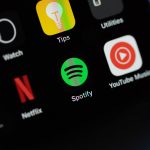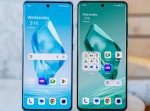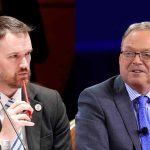- For Pride Month, Insider interviewed Rosanna Durruthy, LinkedIn’s head of diversity, equity, and inclusion.
- A third of LGBTQ workers have faced discrimination at work, per LinkedIn research.
- Durruthy, an openly queer Afro-Latina, shared her plans to promote inclusion for LGBTQ workers.
- See more stories on Insider’s business page.
Several years ago, Rosanna Durruthy took a seat in the reception area of a New York City office. She was there to meet an executive with whom she had talked on the phone for weeks regarding a potential business deal.
When a secretary told the executive, a white man, that Durruthy had arrived, he walked into the reception area, looked around, and went back into his office. He repeated this two times.
“I thought you said she was here,” the executive said to the secretary.
“She is.” the secretary said, pointing to Durruthy, an Afro-Latina. A look of shock washed over the man’s face as if he wasn’t expecting to see a person of color, Durruthy said. He also ended the meeting abruptly despite their strong rapport over the phone.
Durruthy said these types of experiences are far too common for those with marginalized backgrounds. Because of this, she’s dedicated her 35-year career to forging a more inclusive corporate culture.
Today, Durruthy is the head of diversity and inclusion at LinkedIn, where she’s on a mission to inspire others to embrace their unique identity at work. A big part of that personal mission comes from knowing firsthand the pain of not being accepted for who you are in the corporate world.
For Durruthy, Pride Month is a time to double down on the work she’s spearheading. Executives need to focus not only on diversity, but inclusion, she said. One in three LGBTQ+ professionals face blatant discrimination and/or microaggressions at work, per a recent LinkedIn survey.
“As a leader, bravery has had to take different forms,” Durruthy said. “Making people visible often requires not just ‘marching people into a room,’ but having leaders take on new behaviors that allow them to be present when they’re interacting with members of their workforce.”
Durruthy spoke to Insider about the trials and triumphs of her ascension to LinkedIn’s head of diversity, lessons she’s learned along the way, and how she’s clearing the path for other queer professionals.
This interview has been edited for length and clarity.
What does Pride Month mean to you personally and professionally?
Coming of age as a queer Afro-Latina, there was a time when being out just did not seem feasible as a professional. It felt laden with risk. Working now for a company where our mission is to create economic opportunity for every member of the global workforce, it is inspiring and it’s exciting to know that Pride Month is more than the significance of a month. It is about the work created by organizations to create a space where we can each feel safe, where we can be ourselves.
It’s also the recognition that that’s still not an option for everyone. I have a great privilege to lead this work in an environment like LinkedIn, and from the work that we’re doing to create a safer platform for all members. In doing so, it also makes me feel very aware of how much further we have to go to be a part of creating the solution that allows others to feel as comfortable in their skin as I get to be in mine.
You mentioned there was a time where you weren’t comfortable being an openly queer Afro-Latina. When did that change?
I think it happened early in my career, but the irony isn’t lost upon me that it was really a personal reckoning when I was getting ready to accept my first chief diversity officer role [at beverage company Seagram.] It was obvious that I was Black. I was very clear about my Latina heritage and roots. I’m proud to be a Puerto Rican woman. But being gay was something that I was not comfortable with.
I realized I really had to have a conversation with myself about whether I was equipped to lead diversity and inclusion for a company and not be out. And so it was one of those moments where the function of my work itself forced me to come out as opposed to hiding because I felt it would be disingenuous to lead diversity and not authentically be who I am.
What made you want to become a corporate DEI leader? Was there a specific moment in your life where you realized that you had the potential to make a difference?
I think I’m one of those individuals who were fortunate and blessed at a really young age to be aware of what was going on in the world around me. My own intersectional identity gave me the ability, in some cases, to hide that I was gay. It gave me the agility to be in environments where people often assume that I was someone different. There were times where I was made to feel not fully a member of the Black community because somehow being Hispanic made me not qualify as Black at that time, or that being Black made me not Latina enough. So the intersection cuts both ways.
The journey to being myself really came from an understanding of the civil rights era. I saw the work that Martin Luther King, Jr. lost his life for. I knew that I wanted to make a difference when I grew up. And when I began my career, diversity and inclusion didn’t exist. So in many ways, I was preparing for something that didn’t already exist in the business environment.
I feel like it’s been a real journey to create something that’s necessary.
Has there ever been a time when you’ve had to help someone work through difficulties regarding queerness in the workplace?
Yeah, throughout my career, there have actually been numerous times. Even as we look at the most recent research that LinkedIn has released, we look at the fact that over half of LGBTQ professionals today believe that being out negatively impacts your job search, and more than a third of LGBTQ professionals have faced discrimination and/or microaggressions at work.
The work that I do in diversity is not something I do alone. It’s the kind of work that requires others to stand alongside you, not only members of our LGBTQ+ community, but allies as well to recognize and regard the importance of ensuring that everyone in that environment has the ability to realize great potential. But it only happens if the organization empowers and enables that.
Great companies are going to establish clear anti-discrimination and anti-harassment policies. They’re going to create safe spaces for their employees and they’re going to enable brave conversations to take place because these aren’t one-sided conversations. And ultimately, they’re going to commit to inclusive hiring practices and goals, which means they’re willing to stand up and say, “I see you, and I want you in my environment, and I want you to bring your perspective to the work that we’re doing.”
And lastly, it’s not just about bringing people in the door; it’s about building inclusive leaders who are able to unlock the potential in each and every one of their team members, equipping leaders with the skills to understand and confront bias, to actively create a culture of inclusion, and to create the experience of belonging for another.
No one wants the mental stress of having to be someone that they’re not.
Earlier you mentioned the word brave. Could you tell me about a time in your career that you’ve had to be brave?
You just want one time? [laughs] As human beings, there’s always fear in creating something that hasn’t existed before. And the work of diversity, inclusion, and belonging is ultimately still a very new concept, despite the fact that I’ve spent the last 35 years doing this work. And the newness of the concept is this bravery to help people see that each and every one of us is different. We’re born different.
The real bravery of leadership is to create something that didn’t exist previously. When we talk about systemic bias, what we’re also talking about is the permission that society has given to create unfairness, to build in preferences that say you belong here when you come from certain environments or you look a certain way, or your degree is from a certain school, or you speak a certain way.
Ultimately that also lends to how you look, how you walk, the gender you possess, and who you live your life with. And I think bravery happens in each and every day when we say it’s not right, that we are excluding people, that we are designing systems and products and services to benefit some, but effectively are designed to exclude others, to ignore others in many instances.
What is a goal that you want to accomplish in the next year?
I personally would love to see us reach gender parity as an organization in leadership. It may not be in the next year, but I think the progress that we’re making will allow us to see it in a fairly reasonable period of time. And that we continue with the programs and the commitments that we’ve made over the next three years. We’ve pledged to double the number of Black and Latino underrepresented talent in the United States at the senior individual contributor level and beyond. So this year is largely about continuing to make a mark in that progression and that journey of doubling the number of people at LinkedIn who are Black and Latino.
Powered by WPeMatico






